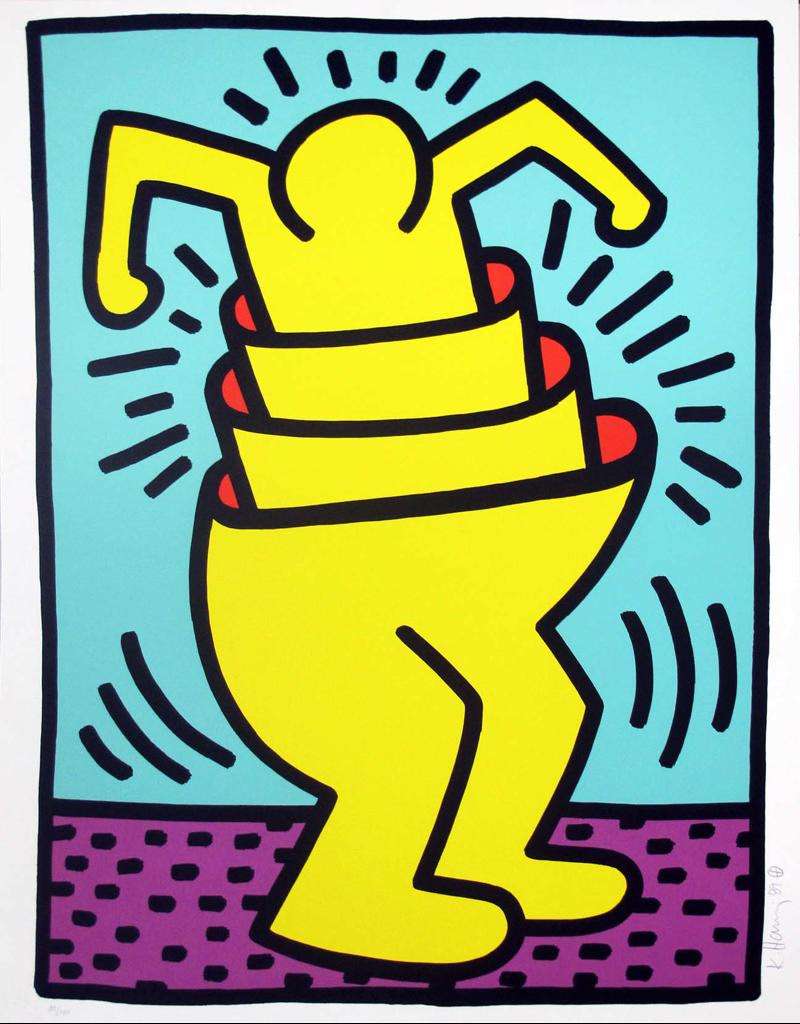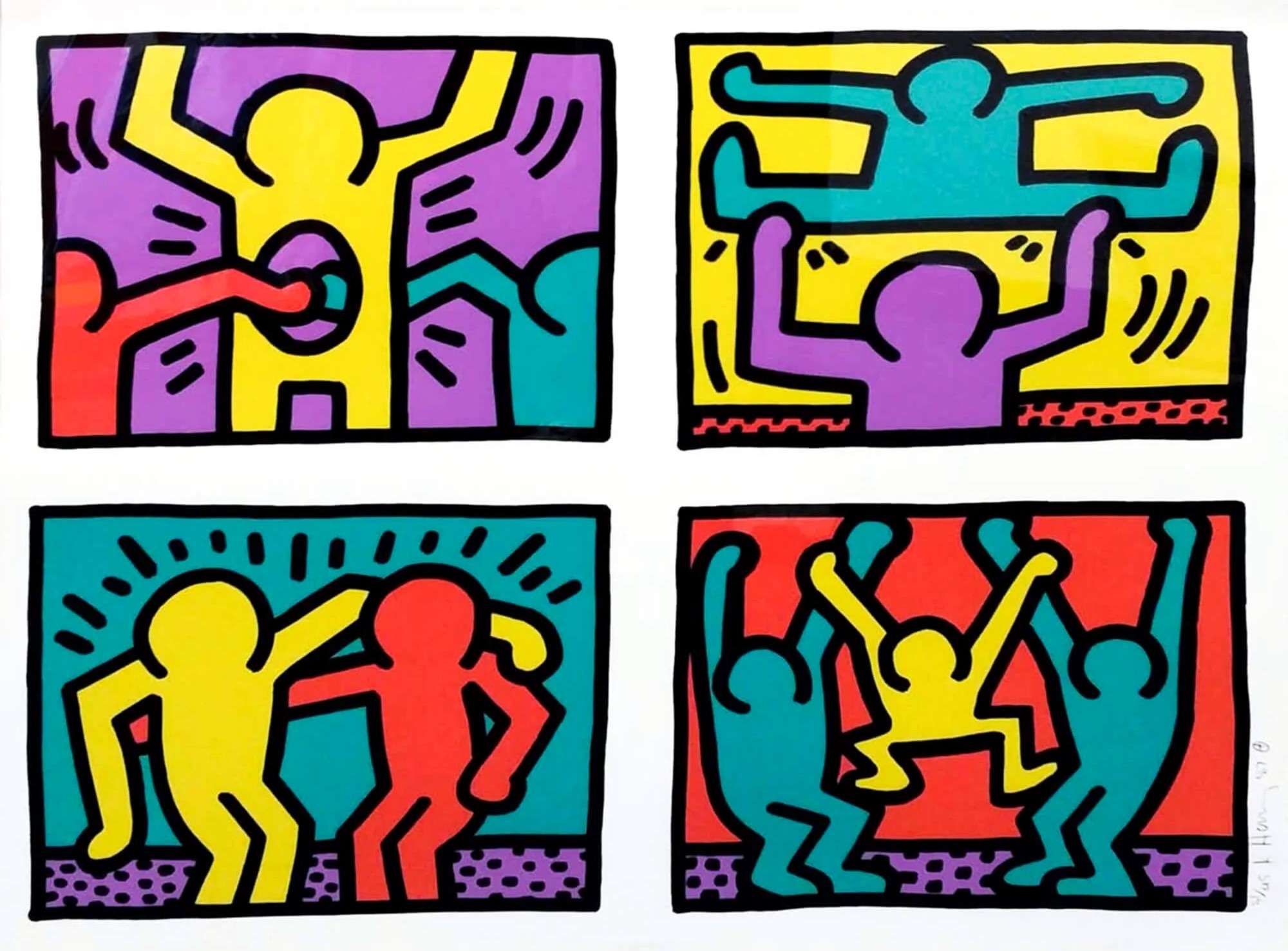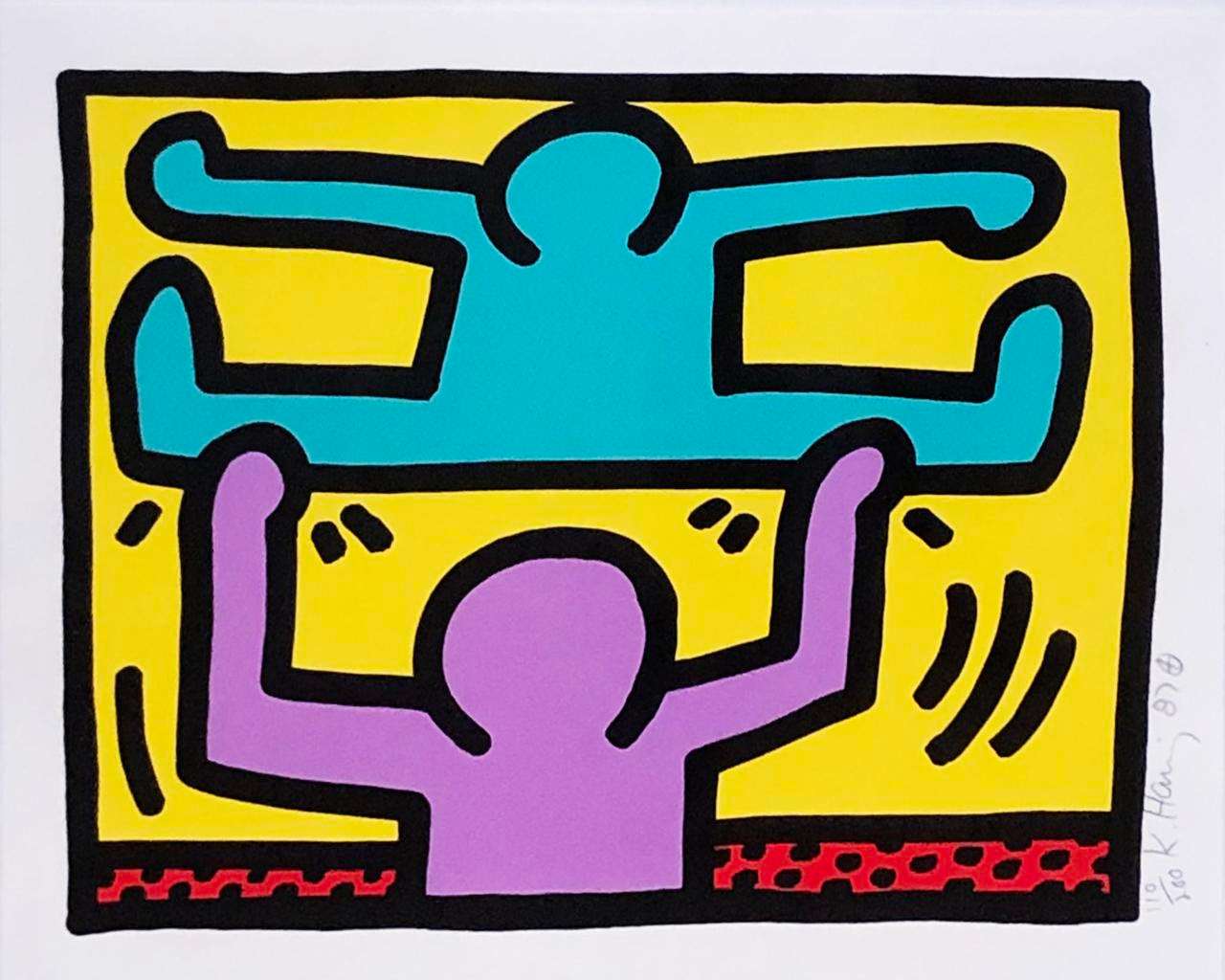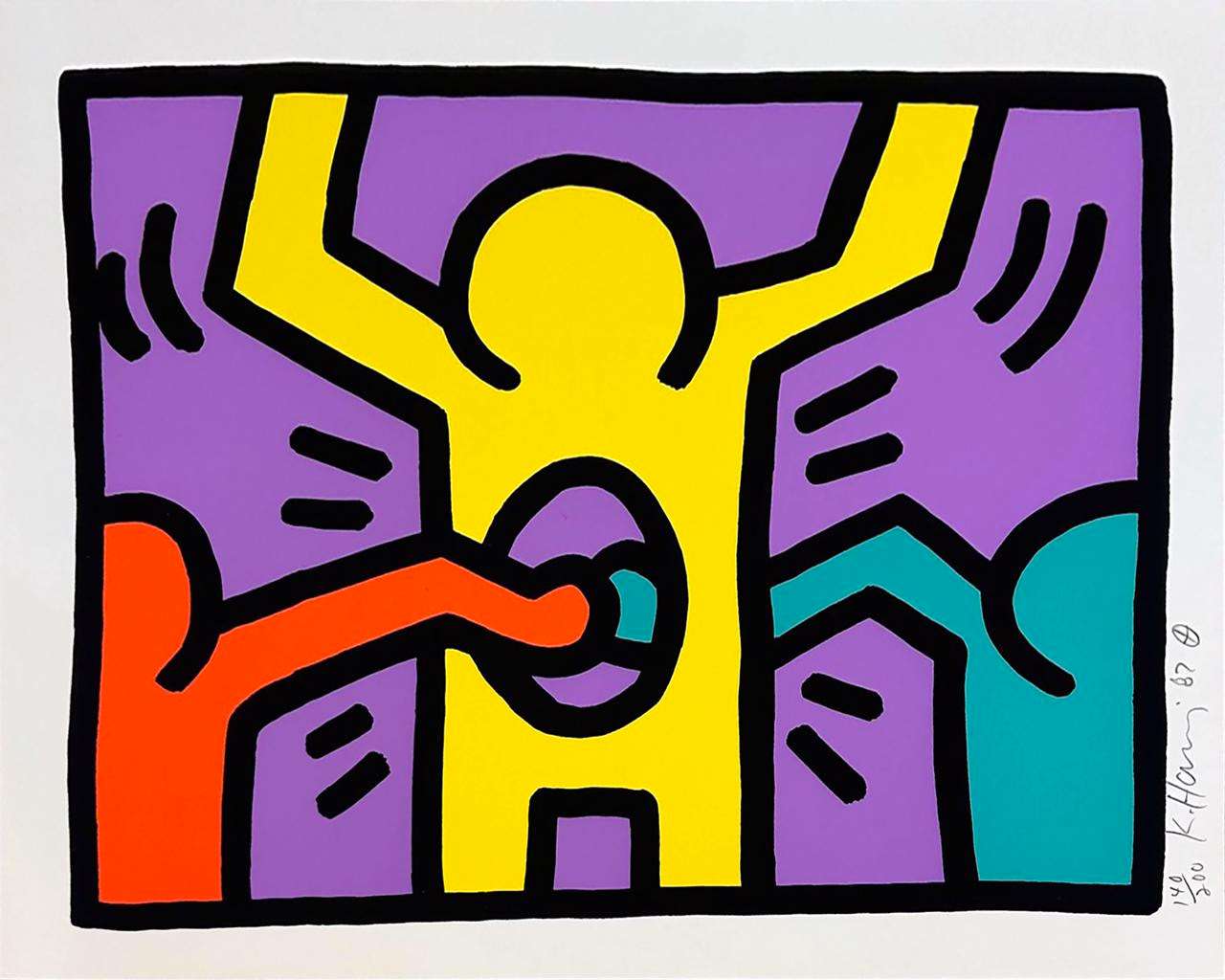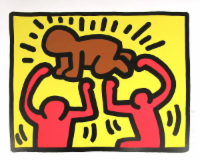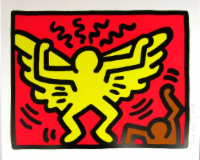
Keith Haring
Buy original Keith Haring artworks from ArtLife, including original paintings and signed prints from across his career. Learn more about Keith Haring life and work here.
Artwork
Biography
Keith Haring was born on 4th May 1958 in Reading, Pennsylvania to parents Joan and Allen Haring, an amateur cartoonist. As such, it’s no surprise he became interested in art from an early age. Developing his drawing skills with his father’s help, he took inspiration from Walt Disney, Dr Seuss, and Looney Tunes cartoons.
During the 70s, Haring was involved with the Jesus Movement, which impacted his own ideologies and artwork—beginning with his own Radiant Child “tag” he left in New York City subway stations. By 1977, Haring had witnessed his first Grateful Dead show, and sold his own bootleg t-shirts to his fellow Deadheads, which became his first publicly sold art. He also printed his own anti-Nixon shirts to sell.
After high school, Haring attended the Ivy School of Professional Art in Pittsburgh, but dropped out after two semesters after realizing he wasn’t interested in commercial art. Instead, he started studying and working independently, eventually hosting his first solo exhibition at the Pittsburgh Arts and Crafts Center in 1978.
In that same year, Haring moved to New York City to enroll in the School of Visual Arts (SVA) and integrated himself into the buzzing alternative art scene developing in the subways, clubs, and dance halls. During this time, he befriended fellow artists like Jean-Michel Basquiat and Kenny Scharf, as well as musicians and other creatives thriving within the community.
Haring was inspired by Andy Warhol, who he described as being the “first real public artist”, as well as Robert Henri’s manifesto, The Art Spirit, which emphasized the independence of the artist. This ultimately gave him the inspiration to create his own artwork in subways, producing hundreds of these public drawings in chalk. His experimentations led to the development of his signature style, created with simple yet rapidly drawn lines, between 1980 and 1985.
Referring to the subway system as his “laboratory”, he successfully communicated with a mass audience and quickly attracted recognition through mass producing his own buttons and magnets to hand out to the public.
Throughout the 1980s, Haring took part in numerous exhibitions, hosting his first solo display in New York in 1981. This was followed the following year by a critically acclaimed solo exhibition at the Tony Shafrazi Gallery. During this decade, he produced over 50 public artworks, usually conveying social and political messages.
As an openly gay man, Haring was the subject of criticism—particularly for his 1982 piece, Untitled. The work depicted two figures in front of a large red heart, and was considered to be a bold nod to homosexual love. He also made works in response to the AIDS epidemic, intending to promote safe sex and break down the stigma surrounding conversation about the disease.
Haring himself was sadly diagnosed with AIDS in 1988 and established the Keith Haring Foundation the following year. This provided funding and artwork to organizations associated with the disease, as well as children’s programs. He spent the final years of his life discussing his own diagnosis and attempting to increase awareness and activism through his art.
Keith Haring died at the age of 31 on 16th February 1990 due to AIDS-related complications. Over 1,000 people attended his memorial service at the Cathedral of St. John the Divine in New York City.
In addition to Warhol, Haring was also influenced by artists like Roy Lichtenstein, and Frank Stella. His use of flat, bold colors and thick outlines in famous pieces like Red Dog and Radiant Baby demonstrate the impact the pop art movement had on his unique style. Of the latter work, Haring said: “There is nothing negative about a baby, ever.”
Another famous Haring piece is the Crack is Wack mural he painted in Harlem in 1986 in response to the crack epidemic. He was originally arrested for it, and the work was vandalized while he was in jail before being painted over in grey by the Parks Department. The public and media outcry over the defacement of the mural led to his fine being reduced to just $100 and no jail time. Upon Haring’s release, the Parks Department commissioned him to repaint the mural and, aside from restoration work in 2007, it has remained unchanged since.
Haring’s painting Rebel With Many Causes is another notable piece, which emphasises the unspoken AIDS epidemic in a “hear no evil, see no evil, speak no evil” American society.
In line with his desire to make his work as accessible as possible, Haring opened the Pop Shop in 1986. Selling his own designs printed on shirts, posters, and other items, Haring faced criticism for commercialising his work. However, he explained the shop was simply an extension of his early graffiti artwork and insisted: “The use of commercial projects has enabled me to reach millions of people whom I would not have reached by remaining an unknown artist. I assumed, after all, that the point of making art was to communicate and contribute to culture.”
The Pop Shop remained open to the public until 2005, with profits going towards the Keith Haring Foundation.
As Haring was keen to make his work accessible to the masses, this could be why he was happy to experiment with screen printing on a large scale, releasing many original prints to the public domain throughout his career. Please contact us if you wish to make an offer or require any assistance regarding any of the Keith Haring art we have for sale. Our team is more than happy to address any queries you may have.
